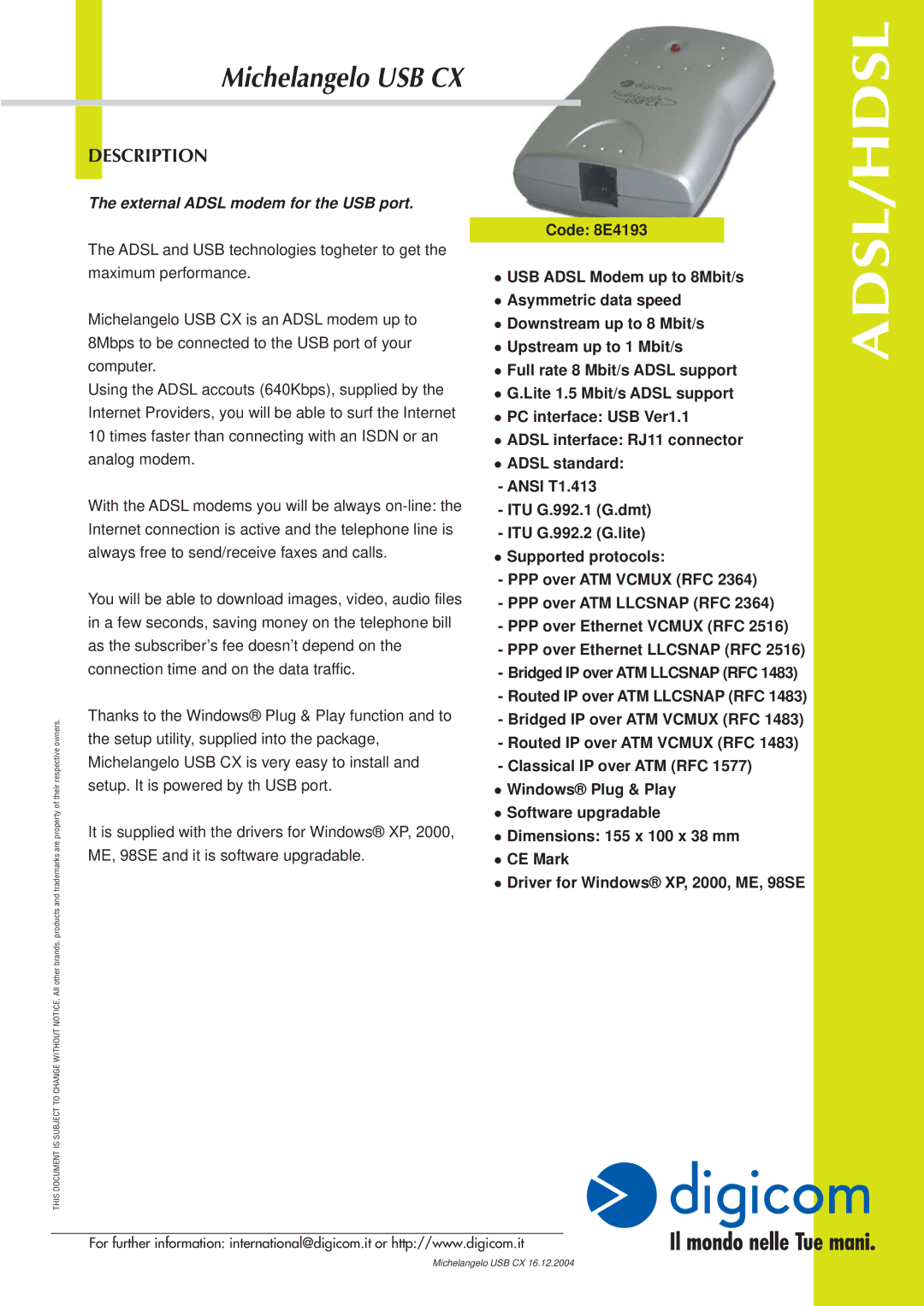HDSL specifications
Digicom HDSL (High Bit-Rate Digital Subscriber Line) technology plays a vital role in providing high-speed data communication over traditional copper telephone lines. This technology is particularly significant for businesses and organizations looking to transmit large amounts of data without the need for extensive fiber optic installations.One of the main features of HDSL is its ability to deliver symmetrical data rates, which means that the upload and download speeds are equal. This characteristic is especially beneficial for applications where data needs to be sent and received at similar rates, such as video conferencing, VoIP, and large file transfers. HDSL typically supports speeds ranging from 1.544 Mbps to 2.048 Mbps, making it a robust option for many users.
The technology utilizes multiple copper wire pairs to achieve its high data rate. Unlike ADSL (Asymmetric Digital Subscriber Line), which uses a single wire pair, HDSL employs two or more twisted pairs to enhance the bandwidth. By utilizing advanced modulation techniques such as 2B1Q (two binary one-Q) line coding, HDSL can maintain high transmission speeds over distances that can reach up to 2.5 miles, making it a versatile solution for a variety of installations.
Another significant characteristic of HDSL is its robustness against noise and interference, which is crucial for maintaining data integrity. HDSL systems incorporate advanced error correction algorithms, ensuring that the transmission remains stable even in less-than-ideal conditions. This reliability makes HDSL an attractive choice for mission-critical applications.
HDSL technology is often implemented in T1 and E1 services, allowing businesses to integrate voice, video, and data services over a single connection. This convergence of services can lead to reduced costs and simplified network management, making it a popular choice among enterprises.
In summary, Digicom HDSL technology offers a reliable, high-speed data transmission solution over existing copper infrastructure. Its symmetrical data rates, utilization of multiple wire pairs, resistance to interference, and capability to support integrated services make it a valuable asset for organizations seeking efficient and effective communications. As the demand for higher data rates continues to grow, HDSL remains a relevant technology in bridging the gap between traditional copper lines and modern digital communication needs.

